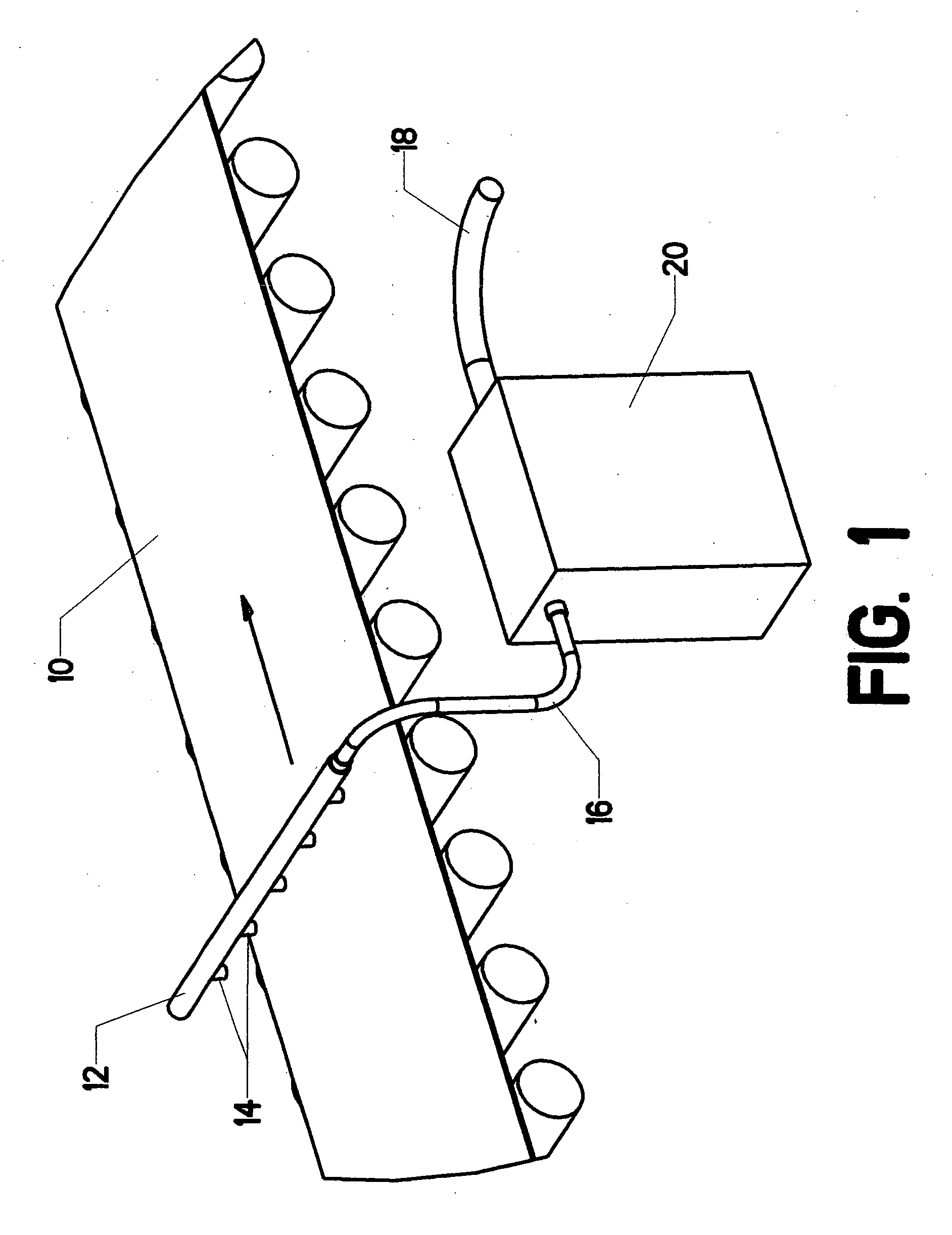Release agent and method for use in baking applications
a technology of release agent and baking pan, which is applied in the field of baking, can solve the problems of limited stability of formulation, limited stability of suspension, and separation of oil and water, and achieve the effect of significant reduction of deposits on baking pans
- Summary
- Abstract
- Description
- Claims
- Application Information
AI Technical Summary
Benefits of technology
Problems solved by technology
Method used
Image
Examples
example 1
[0042] This example involves the creation of a true emulsion “concentrate” suitable for transportation and extended storage. This “concentrate” is designed to be diluted with additional water to create a ready-to-use “release agent.”
[0043] Silicone oil (polydimethysiloxane) was heated to between about 100° C. and about 130° C. Water at or near its boiling point was then added, while the temperature of the mixture was maintained between about 100° C. and about 130° C. A high shear mixer was used through the addition of the water in order to keep the mixture under control. Sorbitan monostearate was added as an emulsifying agent. The mechanical agitation was continued long enough to convert the water-in-oil dispersant (the initial state of the boiling water as it is added) to a stable oil-in-water emulsion. The time required to complete this process ranges from about 5 to about 15 minutes.
[0044] The constituents of the “concentrate” formula, stated on the basis of percentage of total ...
example 2
[0048] A concentrate was created according to the steps detailed in EXAMPLE 1, but more silicone oil was used. The constituents of the concentrate, stated on the basis of percentage of total volume, were as follows:
Silicone oil32%Sorbitan monostearate1-2%Water64-65%
[0049] A stable emulsion was again formed. A diluted formula suitable for use as a release agent was then created by cutting 1 part concentrate with approximately 5 parts additional water (stated on a volumetric basis) The diluted formulation then had the following constituents, stated on the basis of percentage of total volume:
Silicone oil6.7%Sorbitan monostearate.2-.5%Water92-93%
[0050] This diluted formula was likewise effective as a pan release agent.
example 3
[0051] Certain vegetable oil coatings have traditionally been used to form a desirable crust on the surface of the baked bread (as well as desirable colors, flavors, etc.). As described previously, these vegetable oils, if used in quantities sufficient to act as a pan release agent, tend to cause carbon fouling in the pans. However, such oils can be added to the silicone oil-based release agent in much lower amounts in order to provide the desired bread characteristics without substantial fouling. One such desirable vegetable oil (among many candidates) is sunflower oil. Accordingly, a concentrated formulation was created according to the process explained in EXAMPLE 1 having the following formula, stated on the basis of percentage of total mass:
Silicone oil20.7%Sunflower oil8.3%Emulsifier1.2%Water69.8%
[0052] The sunflower oil was heated to the same temperature as the silicone oil and mixed with the silicone oil prior to adding the boiling water.
[0053] A diluted formulation was t...
PUM
| Property | Measurement | Unit |
|---|---|---|
| temperature | aaaaa | aaaaa |
| temperature | aaaaa | aaaaa |
| temperature | aaaaa | aaaaa |
Abstract
Description
Claims
Application Information
 Login to View More
Login to View More - R&D
- Intellectual Property
- Life Sciences
- Materials
- Tech Scout
- Unparalleled Data Quality
- Higher Quality Content
- 60% Fewer Hallucinations
Browse by: Latest US Patents, China's latest patents, Technical Efficacy Thesaurus, Application Domain, Technology Topic, Popular Technical Reports.
© 2025 PatSnap. All rights reserved.Legal|Privacy policy|Modern Slavery Act Transparency Statement|Sitemap|About US| Contact US: help@patsnap.com


